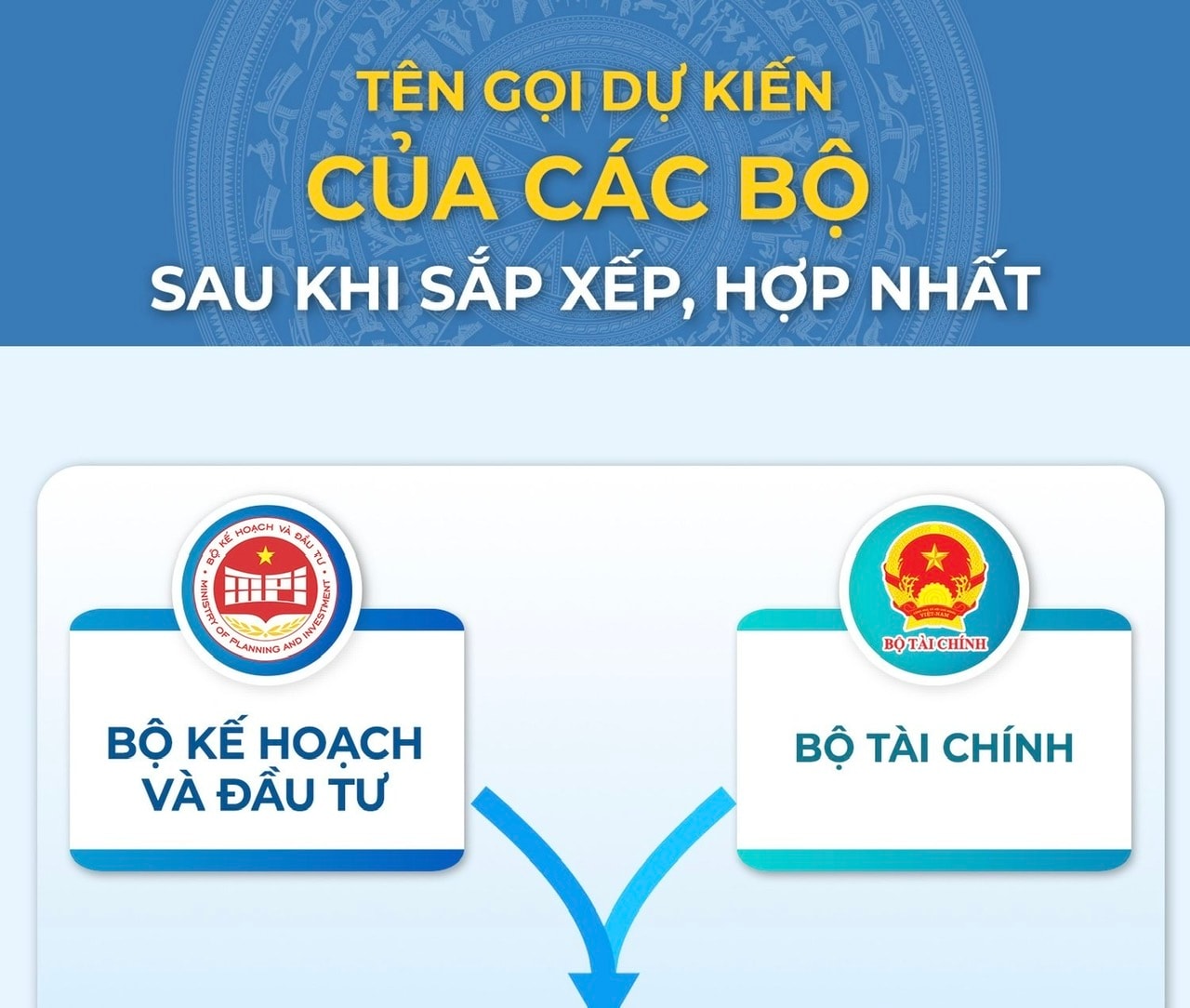The idea of combining names of administrative units from the ministerial level to the communal level can lead to mechanical mergers and consolidations and leave consequences.

The Ministry of Home Affairs has reported to the Government the new names of the ministries after the restructuring and streamlining of the apparatus based on the opinions of the Politburo. According to this plan, there will basically be no more combined names from the combination of the names of the old ministries, except for the Ministry of Agriculture and Environment based on the merger of the Ministry of Agriculture and Rural Development and the Ministry of Natural Resources and Environment. This is a suitable exception.
According to the Ministry of Home Affairs, the names of the ministries that will remain the same include: the Ministry of Finance after merging the Ministry of Planning and Investment and the Ministry of Finance. The Ministry of Home Affairs will retain its name after merging the Ministry of Labor, War Invalids and Social Affairs and the Ministry of Home Affairs. The Ministry of Construction will retain its name after merging the Ministry of Transport and the Ministry of Construction. The Ministry of Science and Technology will retain its name after merging the Ministry of Information and Communications and the Ministry of Science and Technology. The Ministry of Culture, Sports and Tourism will retain its name after taking over the state management function of the press from the Ministry of Information and Communications...
This option is different from the option that proposed new ministry names that combine old names such as: Ministry of Finance and Development Investment or Ministry of Economic Development; Ministry of Infrastructure and Urban Areas; Ministry of Agriculture and Natural Resources, Environment; Ministry of Digital Transformation and Science, Technology or Ministry of Digital Transformation, Science, Technology and Information; Ministry of Home Affairs and Labor.
The new name is also consistent with the suggestion and direction of the Central Party Committee to arrange and streamline the apparatus at the national conference to summarize Resolution 18 of the 12th Central Executive Committee on December 1, 2024. At that time, the Central Committee directed to study and propose the termination of operations and the termination of operations of many ministries, branches, agencies and units.
Naming administrative units is an important task not only at the central level but also at the grassroots level.

Remember in Hai Duong, every time a commune-level administrative unit is merged, naming is always a matter of concern and takes a lot of time. The most acceptable and widely used method is to take the old commune name components and put them together, such as Thuong Dat merging An Chau into An Thuong (Hai Duong City) or Tuan Hung with Viet Hung into Tuan Viet (Kim Thanh)... This method sounds acceptable at first, but upon closer examination, it is not good.
Naming communes in a composite manner has turned some meaningful commune names into meaningless or less meaningful ones, such as Quang Thanh commune, which was composed of Quang Trung commune (name of a famous person) and Phuc Thanh commune in Kinh Mon. Or recently in Binh Giang district, the name Thai Minh commune was formed from Thai Hoc commune (name of a famous person) and Binh Minh commune.
Is it true that naming in a patchwork style is the easiest option from the grassroots to the central level because it is easily accepted by both sides? Is it true that the patchwork thinking will also lead to the merger of just mechanical patchwork that has happened in many agencies and units in the past?
The recent directive of the Politburo is meaningful not only in name.
Naming in a composite manner has left many consequences. First of all, it is a waste of administrative procedures. When merging, if the name of one side can be retained, it will reduce a lot of paperwork and procedures that need to be changed. Second, for units, the composite name will lead to difficulty in escaping the old mindset to form a new agency with integrated content and more progressive operations. What is most needed now is to be compact after the merger, then to be refined, to operate effectively, efficiently and effectively.
Abandoning the idea of patchwork will also guide new administrative agencies to renew themselves, operate in a progressive direction, and conform to international practices.
YOUTH